Tea tree oil for Demodex blepharitis
- PMID: 32589270
- PMCID: PMC7388771
- DOI: 10.1002/14651858.CD013333.pub2
Tea tree oil for Demodex blepharitis
Abstract
Background: Demodex blepharitis is a chronic condition commonly associated with recalcitrant dry eye symptoms though many people with Demodex mites are asymptomatic. The primary cause of this condition in humans is two types of Demodex mites: Demodex folliculorum and Demodex brevis. There are varying reports of the prevalence of Demodex blepharitis among adults, and it affects both men and women equally. While Demodex mites are commonly treated with tea tree oil, the effectiveness of tea tree oil for treating Demodex blepharitis is not well documented.
Objectives: To evaluate the effects of tea tree oil on ocular Demodex infestation in people with Demodex blepharitis.
Search methods: We searched CENTRAL (which contains the Cochrane Eyes and Vision Trials Register) (2019, Issue 6); Ovid MEDLINE; Embase.com; PubMed; LILACS; ClinicalTrials.gov; and the World Health Organization (WHO) International Clinical Trials Registry Platform (ICTRP). We used no date or language restrictions in the electronic search for trials. We last searched the databases on 18 June 2019.
Selection criteria: We included randomized controlled trials (RCTs) that compared treatment with tea tree oil (or its components) versus another treatment or no treatment for people with Demodex blepharitis.
Data collection and analysis: Two review authors independently screened the titles and abstracts and then full text of records to determine their eligibility. The review authors independently extracted data and assessed risk of bias using Covidence. A third review author resolved any conflicts at all stages.
Main results: We included six RCTs (1124 eyes of 562 participants; 17 to 281 participants per study) from the US, Korea, China, Australia, Ireland, and Turkey. The RCTs compared some formulation of tea tree oil to another treatment or no treatment. Included participants were both men and women, ranging from 39 to 55 years of age. All RCTs were assessed at unclear or high risk of bias in one or more domains. We also identified two RCTs that are ongoing or awaiting publications. Data from three RCTs that reported a short-term mean change in the number of Demodex mites per eight eyelashes contributed to a meta-analysis. We are uncertain about the mean reduction for the groups that received the tea tree oil intervention (mean difference [MD] 0.70, 95% confidence interval [CI] 0.24 to 1.16) at four to six weeks as compared to other interventions. Only one RCT reported data for long-term changes, which found that the group that received intense pulse light as the treatment had complete eradication of Demodex mites at three months. We graded the certainty of the evidence for this outcome as very low. Three RCTs reported no evidence of a difference for participant reported symptoms measured on the Ocular Surface Disease Index (OSDI) between the tea tree oil group and the group receiving other forms of intervention. Mean differences in these studies ranged from -10.54 (95% CI - 24.19, 3.11) to 3.40 (95% CI -0.70 7.50). We did not conduct a meta-analysis for this outcome given substantial statistical heterogeneity and graded the certainty of the evidence as low. One RCT provided information concerning visual acuity but did not provide sufficient data for between-group comparisons. The authors noted that mean habitual LogMAR visual acuity for all study participants improved post-treatment (mean LogMAR 1.16, standard deviation 0.26 at 4 weeks). We graded the certainty of evidence for this outcome as low. No RCTs provided data on mean change in number of cylindrical dandruff or the proportion of participants experiencing conjunctival injection or experiencing meibomian gland dysfunction. Three RCTs provided information on adverse events. One reported no adverse events. The other two described a total of six participants randomized to treatment with tea tree oil who experienced ocular irritation or discomfort that resolved with re-educating the patient on application techniques and continuing use of the tea tree oil. We graded the certainty of the evidence for this outcome as very low.
Authors' conclusions: The current review suggests that there is uncertainty related to the effectiveness of 5% to 50% tea tree oil for the short-term treatment of Demodex blepharitis; however, if used, lower concentrations may be preferable in the eye care arena to avoid induced ocular irritation. Future studies should be better controlled, assess outcomes at long term (e.g. 10 to 12 weeks or beyond), account for patient compliance, and study the effects of different tea tree oil concentrations.
Copyright © 2020 The Cochrane Collaboration. Published by John Wiley & Sons, Ltd.
Conflict of interest statement
KS, JTL, and ADP have no financial interests in the subject matter of this systematic review. This Cochrane Review was prepared while JTL was a methodologist at the Johns Hopkins Bloomberg School of Public Health. The opinions expressed in this article are the author's own and do not reflect the view of the National Institutes of Health, the Department of Health and Human Services, or the US government.
Figures
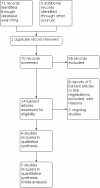
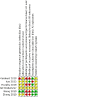
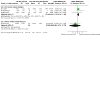
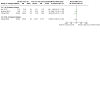
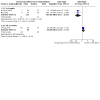




Update of
- doi: 10.1002/14651858.CD013333
References
References to studies included in this review
Karakurt 2018 {published data only}
-
- Karakurt Y, Zeytun E. Evaluation of the efficacy of tea tree oil on the density of Demodex mites (Acari: Demodicidae) and ocular symptoms in patients with demodectic blepharitis. Journal of Parasitology 2018;104(5):473-8. - PubMed
Koo 2012 {published data only}
Murphy 2018 {published data only}
-
- Murphy O, O'Dwyer V, Lloyd-McKernan A. The efficacy of tea tree face wash, 1,2-octanediol and microblepharoexfoliation in treating Demodex folliculorum blepharitis. Contact Lens & Anterior Eye 2018;41(1):77-82. - PubMed
NCT01647217 {published data only}
-
- NCT01647217. Demodex Blepharitis Treatment Study (DBTS). clinicaltrials.gov/ct2/show/NCT01647217 (first received 23 July 2012).
Wong 2019 {published data only}
-
- Wong K, Flanagan J, Jalbert I, Tan J. The effect of Blephadex™ Eyelid Wipes on Demodex mites, ocular microbiota, bacterial lipase and comfort: a pilot study. Contact Lens & Anterior Eye 2019;42(6):652-7. - PubMed
Zhang 2019 {published data only}
-
- Zhang X, Song N, Gong L. Therapeutic effect of intense pulsed light on ocular demodicosis. Current Eye Research 2019;44(3):250-6. - PubMed
References to studies excluded from this review
ChiCTR1800019466 {published data only}
-
- ChiCTR1800019466. Eradication of Demodex folliculorum by okra eyelid patch in the treatment of demodectic blepharitis. www.chictr.org.cn/showprojen.aspx?proj=32773(first received 12 November 2018).
ChiCTR‐OON‐16010205 {published data only}
-
- ChiCTR-OON-16010205. The effect of orbital intense pulsed light treatment on blepharokeratoconjunctivitis. www.chictr.org.cn/com/25/showproj.aspx?proj=17380 (first received 21 December 2016).
IRCT2013111313567N5 {published data only}
-
- IRCT2013111313567N5. Impact of tea tree oil on dry eye treatment. en.irct.ir/trial/13390 (first received 21 June 2015).
Maher 2018 {published data only}
Ngo 2018 {published data only}
-
- Ngo W, Jones L, Bitton E. Short-term comfort responses associated with the use of eyelid cleansing products to manage Demodex folliculorum. Eye & Contact Lens 2018;44(Suppl 2):S87-S92. - PubMed
-
- Ngo W, Jones LW, Srinivasan S, Bitton E. Discomfort over time associated with various ocular Demodex treatment products. Investigative Ophthalmology and Visual Science 2016;57(12):ARVO E-abstract 2838.
References to ongoing studies
NCT01073150 {published data only}
-
- NCT01073150. Tea tree oil in the treatment of chronic blepharitis. clinicaltrials.gov/show/nct01073150 (first received 23 February 2010).
NCT03422146 {published data only}
-
- NCT03422146. Antimicrobial and clinical efficacy of Cliradex® as compared with I-Lid'n Lash® hygiene in treating blepharitis. clinicaltrials.gov/show/nct03422146 (first received 5 February 2018).
Additional references
AAO 2018
-
- American Academy of Ophthalmology. Blepharitis – preferred practice pattern. www.aao.org/preferred-practice-pattern/blepharitis-ppp-2018 (accessed prior to 17 April 2019).
Amescua 2019
-
- Amescua G, Akpek EK, Farid M, Garcia-Ferrer FJ, Lin A, Rhee MK, et al. Blepharitis preferred practice pattern. Ophthalmology 2019;26(1):P56-93. - PubMed
Basta‐Juzbasic 2002
-
- Basta-Juzbasic A, Subic JS, Ljubojevic S. Demodex folliculorum in development of dermatitis rosaceiformis steroidica and rosacea-related diseases. Clinics in Dermatology 2002;20(2):135-40. - PubMed
Biernat 2018
-
- Biernat MM, Rusiecka-Ziolkowska J, Piatkowska E, Helemejko I, Biernat P, Gosciniak G. Occurrence of Demodex species in patients with blepharitis and in healthy individuals: a 10-year observational study. Japanese Journal of Ophthalmology 2018;62(6):628-33. - PubMed
Bitton 2019
-
- Bitton E, Ngo W, Dupont P. Eyelid hygiene products: a scoping review. Contact Lens & Anterior Eye 2019;42(6):591-7. - PubMed
Brand 2001
-
- Brand C, Ferrante A, Prager RH, Riley TV, Carson CF, Finlay-Jones JJ, et al. The water-soluble components of the essential oil of Melaleuca alternifolia (tea tree oil) suppress the production of superoxide by human monocytes, but not neutrophils, activated in vitro. Inflammation Research 2001;50(4):213-9. - PubMed
Cheng 2015
-
- Cheng AM, Sheha H, Tseng SC. Recent advances on ocular Demodex infestation. Current Opinion in Ophthalmology 2015;26(4):295-300. - PubMed
Coston 1967
Covidence [Computer program]
-
- Covidence. Melbourne: Veritas Health Innovation, accessed prior to 9 April 2019. Available at www.covidence.org.
Czepita 2007
-
- Czepita D, Kuzna-Grygiel W, Czepita M, Grobelny A. Demodex folliculorum and Demodex brevis as a cause of chronic marginal blepharitis. Annales Academiae Medicae Stetinensis 2007;53(1):63-7. - PubMed
Deeks 2017
-
- Deeks JJ, Higgins JP, Altman DG, on behalf of the Cochrane Statistical Methods Group. Chapter 9: Analysing data and undertaking meta-analyses. In: Higgins JP, Churchill R, Chandler J, Cumpston MS, editor(s). Cochrane Handbook for Systematic Reviews of Interventions version 5.2.0 (updated June 2017). The Cochrane Collaboration, 2017. Available from www.training.cochrane.org/handbook.
English 1981
-
- English FP, Nutting WB. Demodicosis of ophthalmic concern. American Journal of Ophthalmology 1981;91(3):362-72. - PubMed
Erbagci 2003
-
- Erbagci Z, Erbagci I, Erkilic S. High incidence of demodicidosis in eyelid basal cell carcinomas. International Journal of Dermatology 2003;42(7):567-71. - PubMed
Filho 2011
-
- Filho PA, Hazarbassanov RM, Grisolia AB, Pazos HB, Kaiserman I, Gomes JA. The efficacy of oral ivermectin for the treatment of chronic blepharitis in patients tested positive for Demodex spp. British Journal of Ophthalmology 2011;95(6):893-5. - PubMed
Forton 2005
-
- Forton F, Germaux MA, Brasseur T, De Liever A, Laporte M, Mathys C, et al. Demodicosis and rosacea: epidemiology and significance in daily dermatologic practice. Journal of the American Academy of Dermatology 2005;52(1):74-87. - PubMed
Fromstein 2018
Gao 2005a
Gao 2005b
-
- Gao YY, Di Pascuale MA, Li W, Liu DT, Baradaran-Rafii A, Elizondo A, et al. High prevalence of Demodex in eyelashes with cylindrical dandruff. Investigative Ophthalmology and Visual Science 2005;46(9):3089-94. - PubMed
Gao 2007
-
- Gao YY, Di Pascuale MA, Elizondo A, Tseng SC. Clinical treatment of ocular demodecosis by lid scrub with tea tree oil. Cornea 2007;26(2):136-43. - PubMed
GRADEpro GDT [Computer program]
-
- GRADEpro GDT. Version accessed prior to 9 April 2019. Hamilton (ON): McMaster University (developed by Evidence Prime Inc), 2015. Available at gradepro.org.
Hammer 2006
-
- Hammer KA, Carson CF, Riley TV, Nielsen JB. A review of the toxicity of Melaleuca alternifolia (tea tree) oil. Food and Chemical Toxicology 2006;44(5):616-25. - PubMed
Hart 2000
-
- Hart PH, Brand C, Carson CF, Riley TV, Prager RH, Finlay-Jones JJ. Terpinen-4-ol, the main component of the essential oil of Melaleuca alternifolia (tea tree oil), suppresses inflammatory mediator production by activated human monocytes. Inflammation Research 2000;49(11):619-26. - PubMed
Herron 2005
-
- Herron MD, O'Reilly MA, Vanderhooft SL. Refractory Demodex folliculitis in five children with acute lymphoblastic leukemia. Pediatric Dermatology 2005;22(5):407-11. - PubMed
Higgins 2017
-
- Higgins JP, Altman DG, Sterne JA. Chapter 8: Assessing risk of bias in included studies. In: Higgins JP, Churchill R, Chandler J, Cumpston MS, editor(s). Cochrane Handbook for Systematic Reviews of Interventions version 5.2.0 (updated June 2017). The Cochrane Collaboration, 2017. Available from www.training.cochrane.org/handbook.
Jones 2017
-
- Jones L, Downie LE, Korb D, Benitez-Del-Castillo JM, Dana R, Deng SX, et al. TFOS DEWS II management and therapy report. Ocular Surface 2017;15(3):575-628. - PubMed
Kaya 2018
-
- Kaya A, Gurdal C. Office-based diagnosis of Demodex using smartphone. Eye & Contact Lens 2018;44(6):e25-6. - PubMed
Kemal 2005
-
- Kemal M, Sumer Z, Toker MI, Erdogan H, Topalkara A, Akbulut M. The prevalence of Demodex folliculorum in blepharitis patients and the normal population. Ophthalmic Epidemiology 2005;12(4):287-90. - PubMed
Lam 2018
-
- Lam NS, Long XX, Griffin RC, Chen MK, Doery JC. Can the tea tree oil (Australian native plant: Melaleuca alternifolia Cheel) be an alternative treatment for human demodicosis on skin? Parasitology 2018;145(12):1510-20. - PubMed
Lemp 2009
-
- Lemp MA, Nichols KK. Blepharitis in the United States 2009: a survey-based perspective on prevalence and treatment. Ocular Surface 2009;7(2):S1-14. - PubMed
Li 2017
Lindsley 2012
Liu 2010
Murphy 2020
-
- Murphy O, O'Dwyer V, Lloyd-McKernan A. The clinical use of eyelash manipulation in the diagnosis of Demodex folliculorum blepharitis. Eye & Contact Lens 2020;46(Suppl 1):S33-8. - PubMed
Navel 2019
-
- Navel V, Mulliez A, Benoist d'Azy C, Baker JS, Malecaze J, Chiambaretta F, et al. Efficacy of treatments for Demodex blepharitis: a systematic review and meta-analysis. Ocular Surface 2019;17(4):655-69. - PubMed
Nicholls 2017
-
- Nicholls SG, Oakley CL, Tan A, Vote BJ. Demodex species in human ocular disease: new clinicopathological aspects. International Ophthalmology 2017;37(1):303-12. - PubMed
Post 1963
-
- Post CF, Juhlin E. Demodex folliculorum and blepharitis. Archives of Dermatology 1963;88(3):298-302. - PubMed
Review Manager 2014 [Computer program]
-
- Review Manager 5 (RevMan 5). Version 5.3. Copenhagen: Nordic Cochrane Centre, The Cochrane Collaboration, 2014.
Roth 1979
-
- Roth AM. Demodex folliculorum in hair follicles of eyelid skin. Annals of Ophthalmology 1979;11(1):37-40. - PubMed
Sabeti 2020
-
- Sabeti S, Kheirkhah A, Yin J, Dana R. Management of meibomian gland dysfunction: a review. Survey of Ophthalmology 2020;65(2):205-17. - PubMed
Schelz 2006
-
- Schelz Z, Molnar J, Hohmann J. Antimicrobial and antiplasmid activities of essential oils. Fitoterapia 2006;77(4):279-85. - PubMed
Swords 1978
-
- Swords G, Hunter GL. Composition of Australian tea tree oil (Melaleuca alternifolia). Journal of Agricultural and Food Chemistry 1978;26(3):734-7.
Tighe 2013
Wolffsohn 2017
-
- Wolffsohn JS, Arita R, Chalmers R, Djalilian A, Dogru M, Dumbleton K, et al. TFOS DEWS II diagnostic methodology report. Ocular Surface 2017;15(3):539-74. - PubMed
Zhang 2018
-
- Zhang X, Song N, Gong L. Therapeutic effect of intense pulsed light on ocular demodicosis. Current Eye Research 2019;44(3):250-6. - PubMed
Publication types
MeSH terms
Substances
Grants and funding
LinkOut - more resources
Full Text Sources
Other Literature Sources

